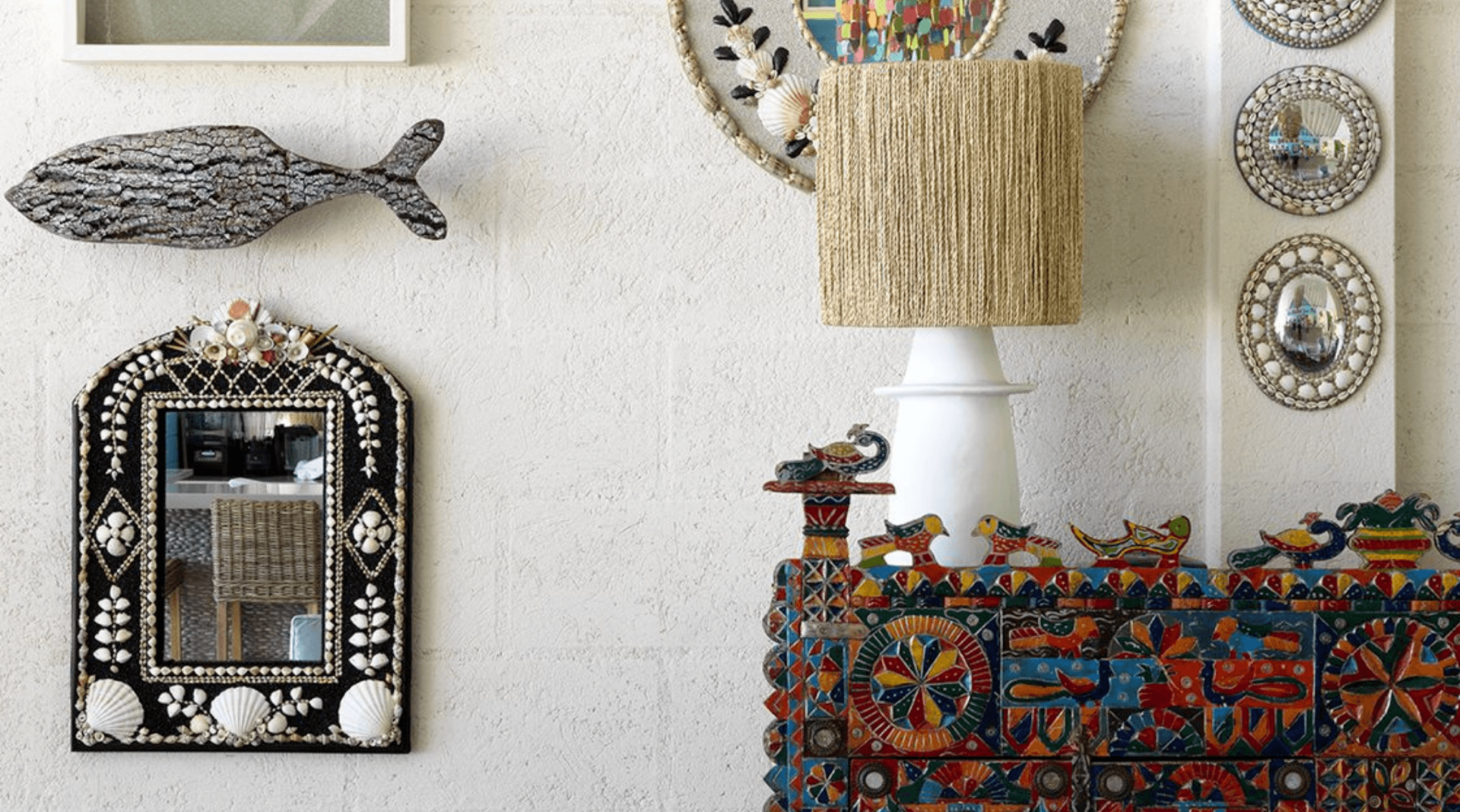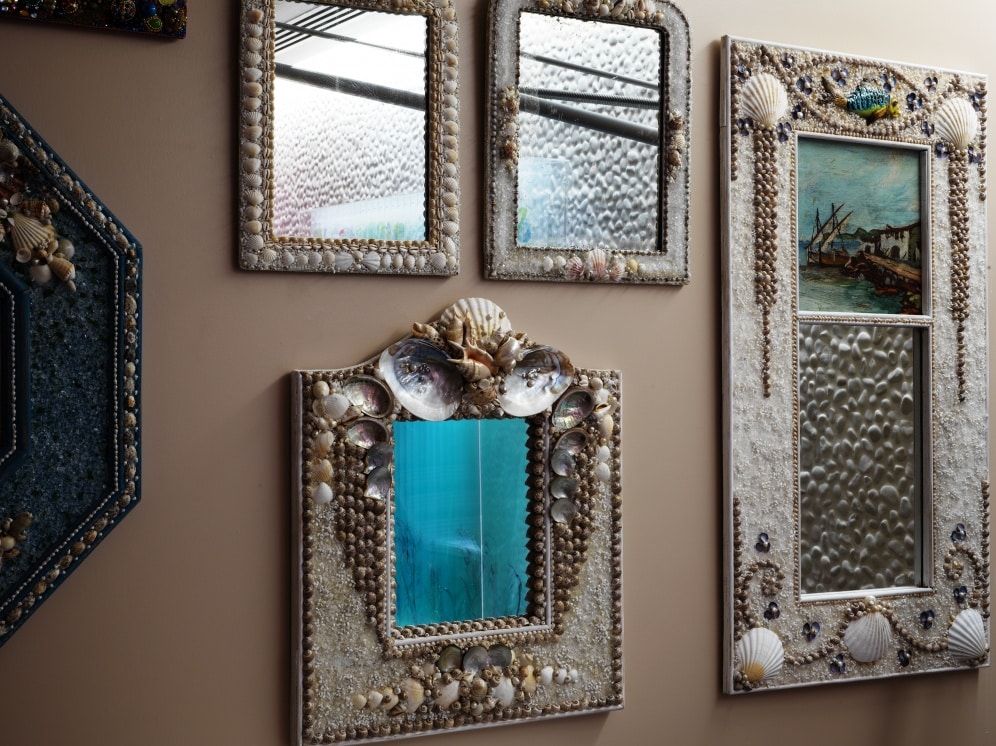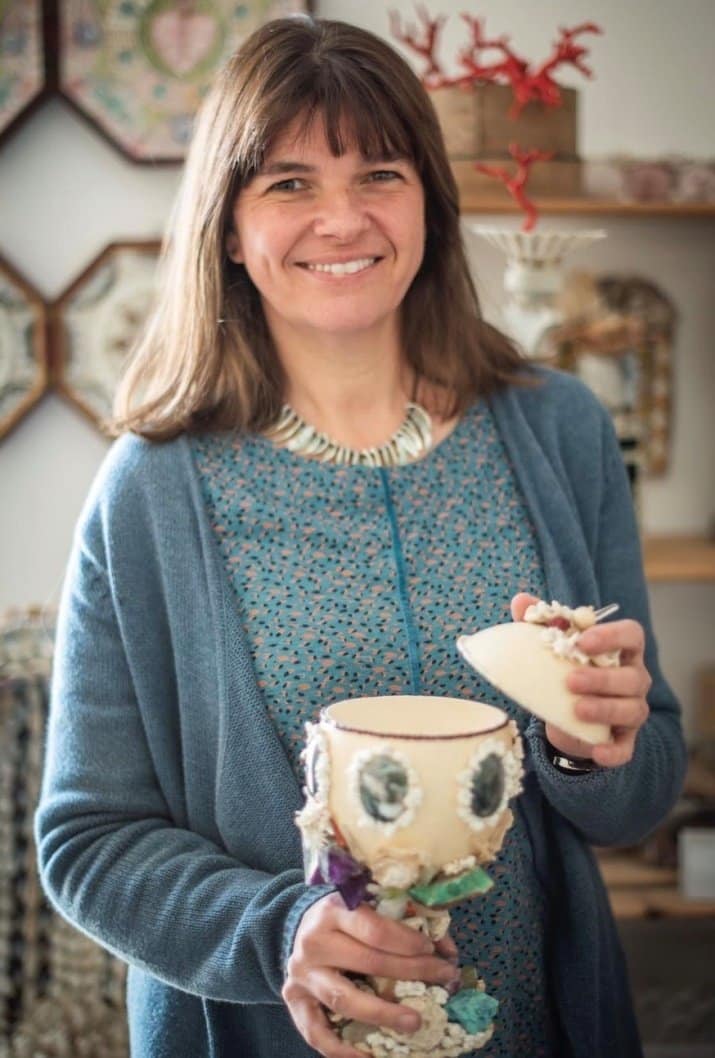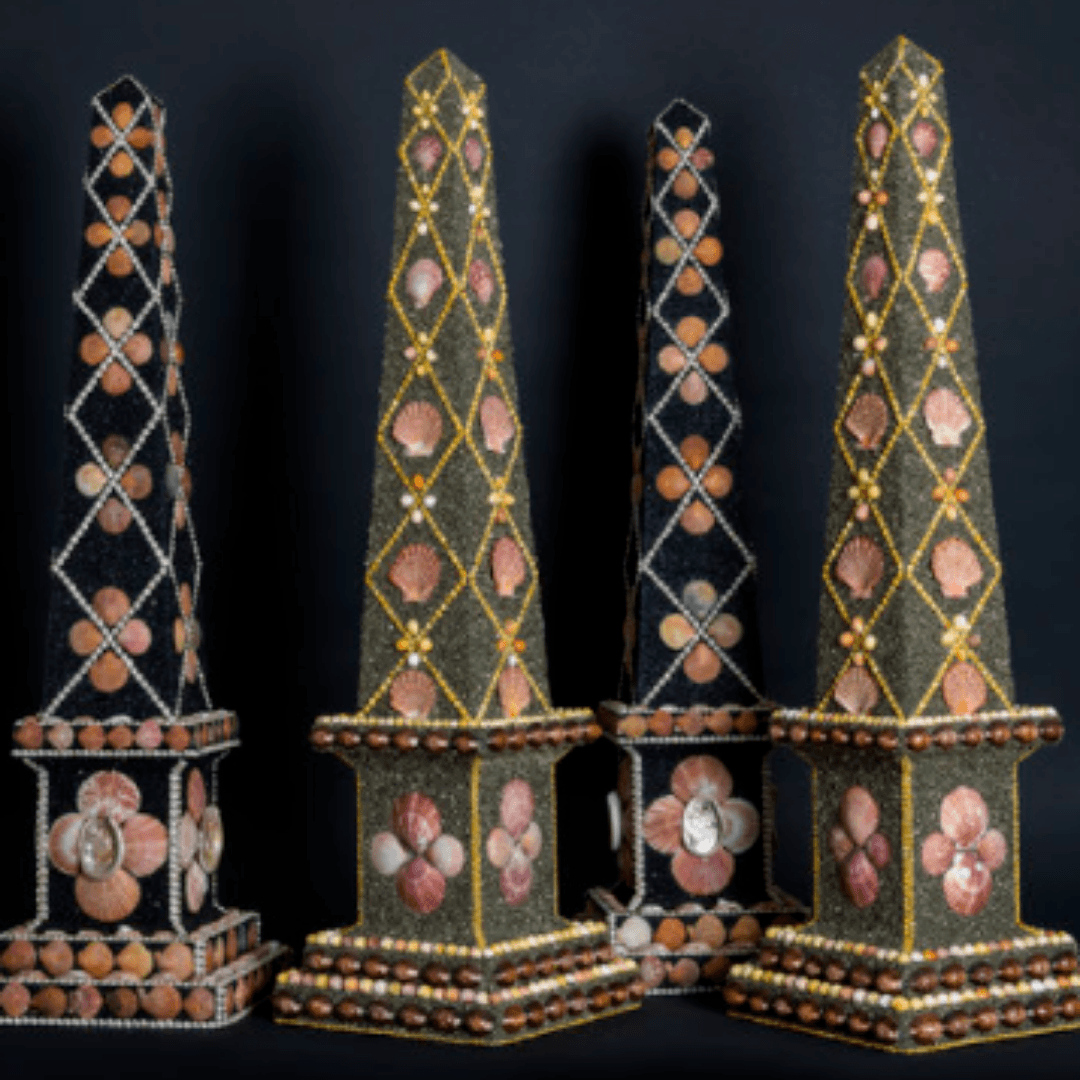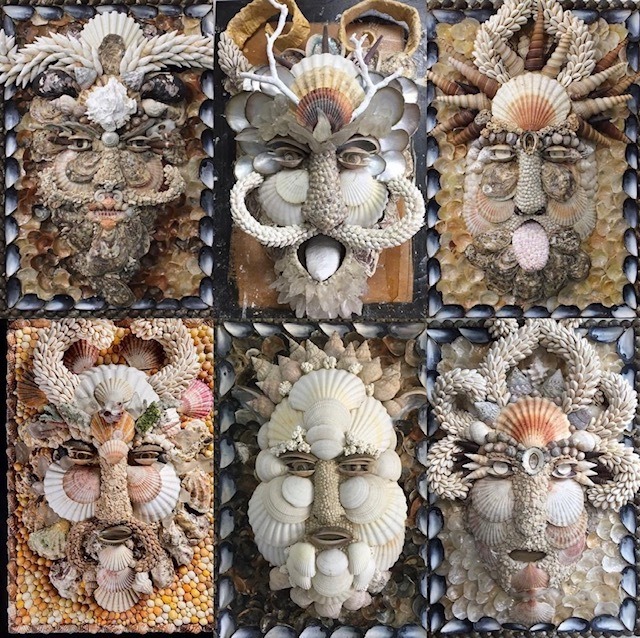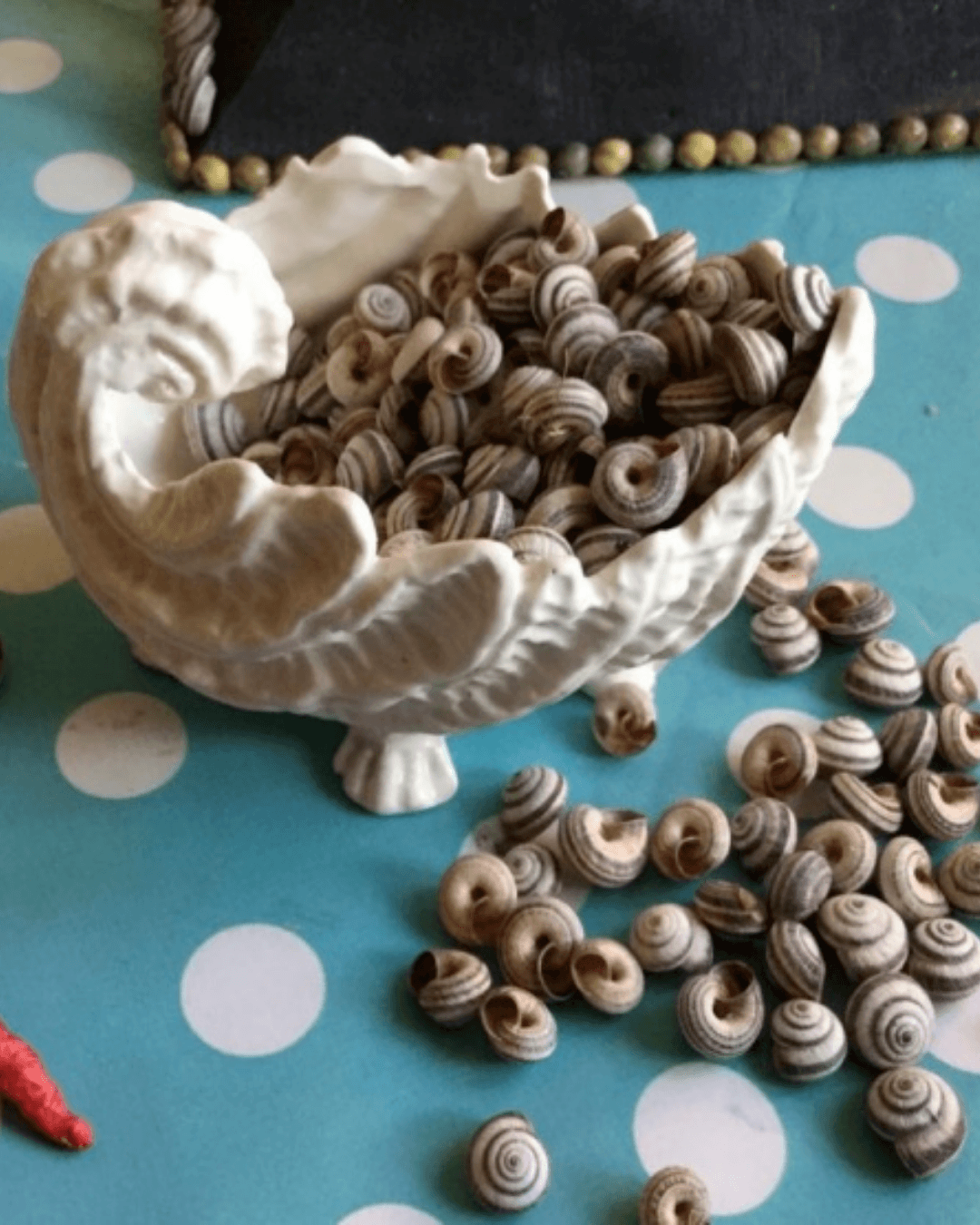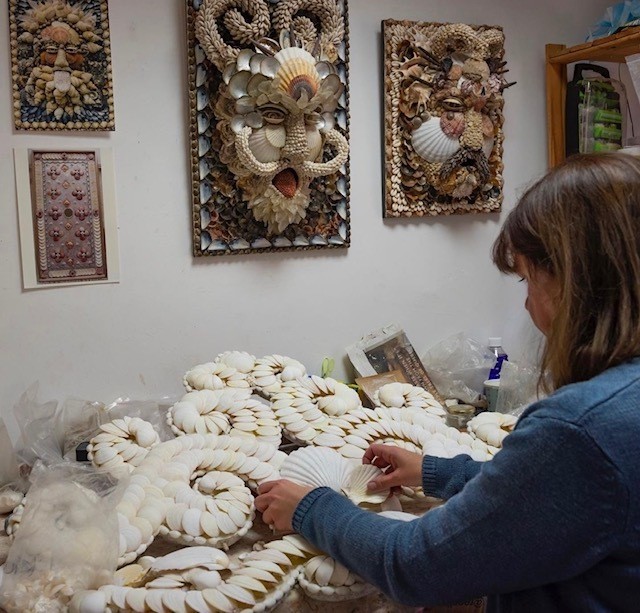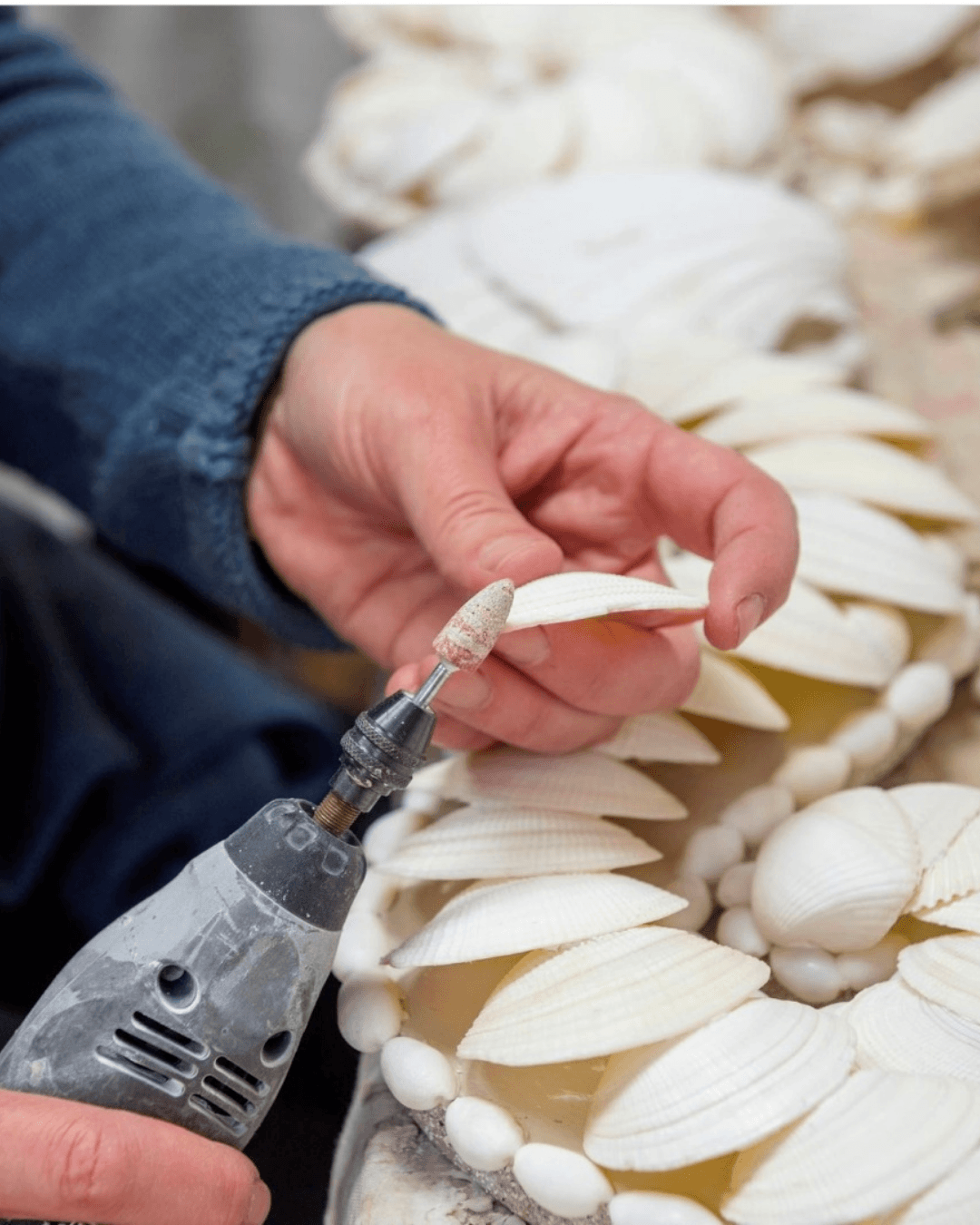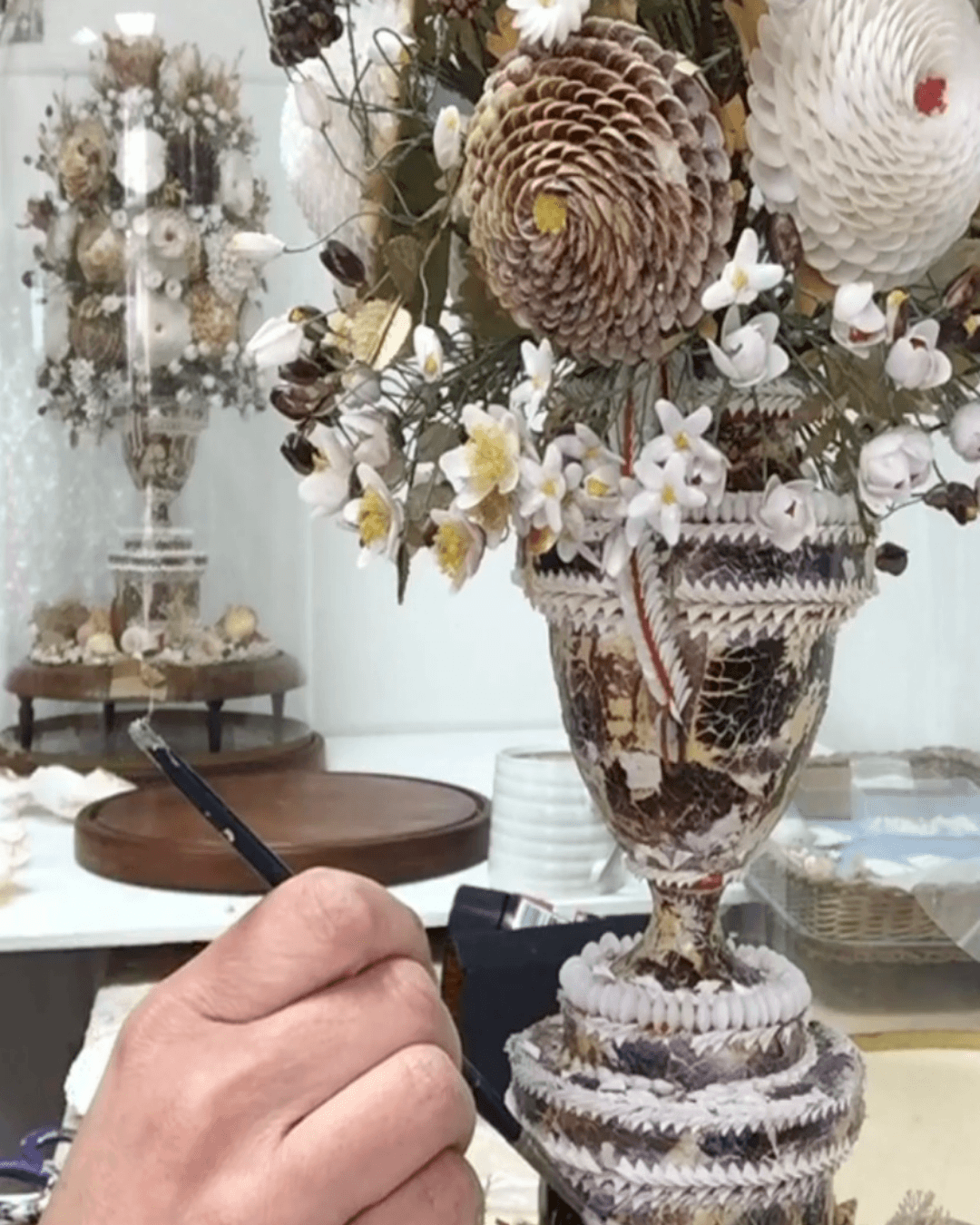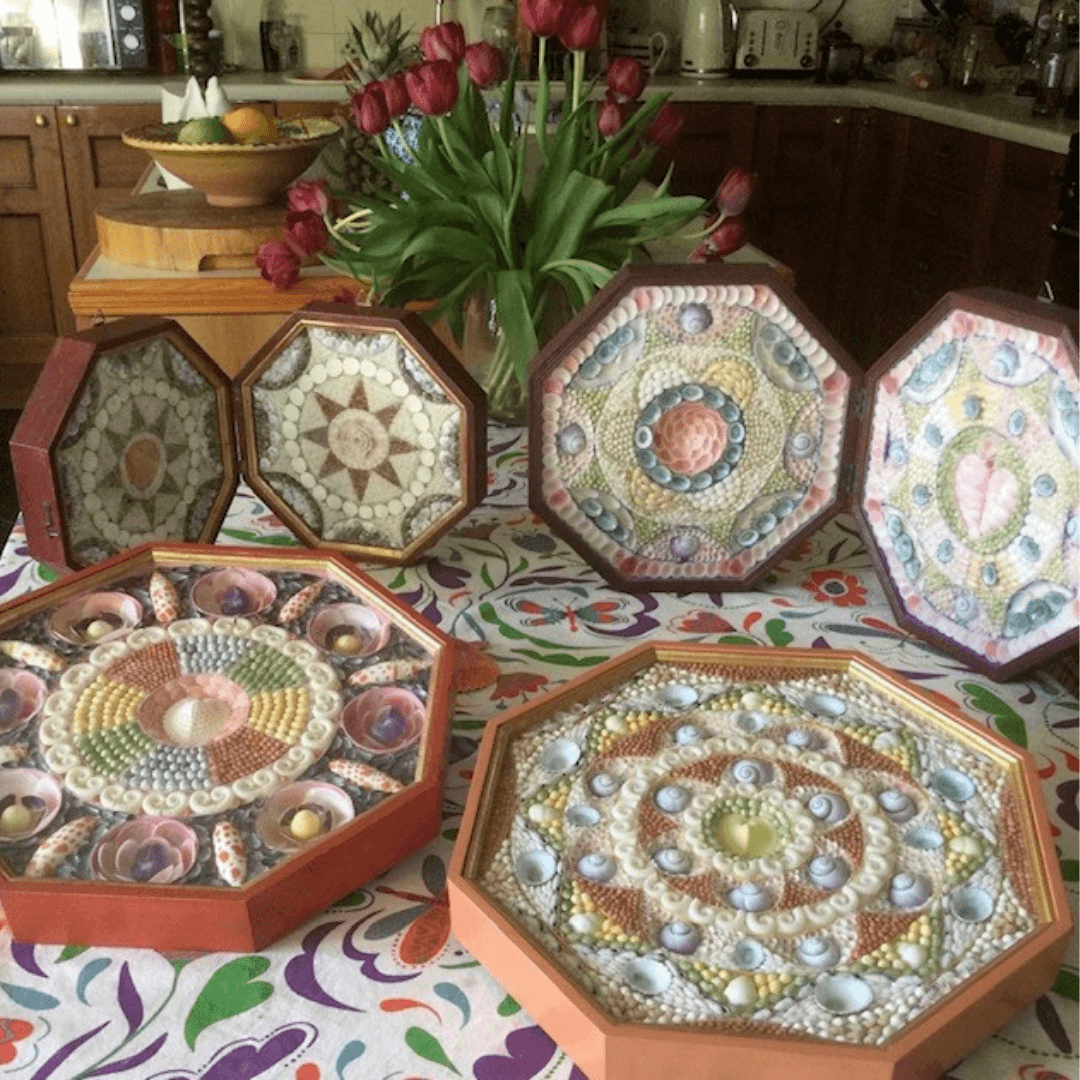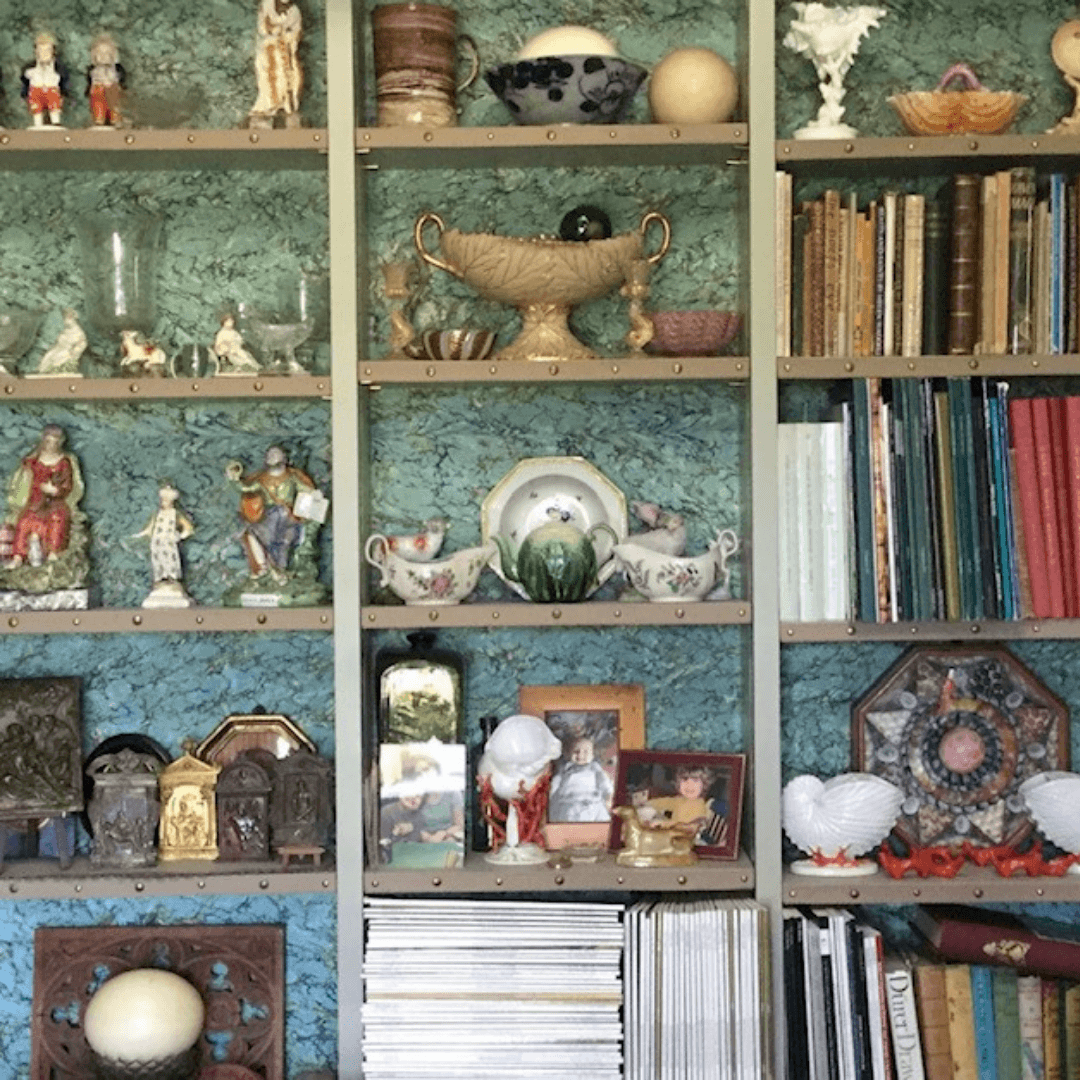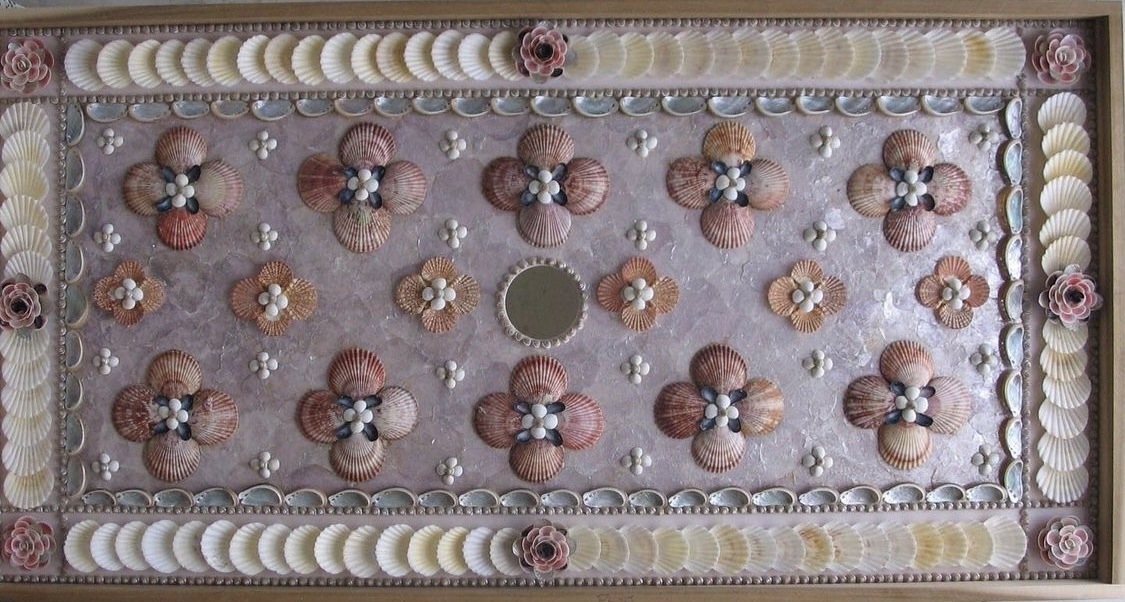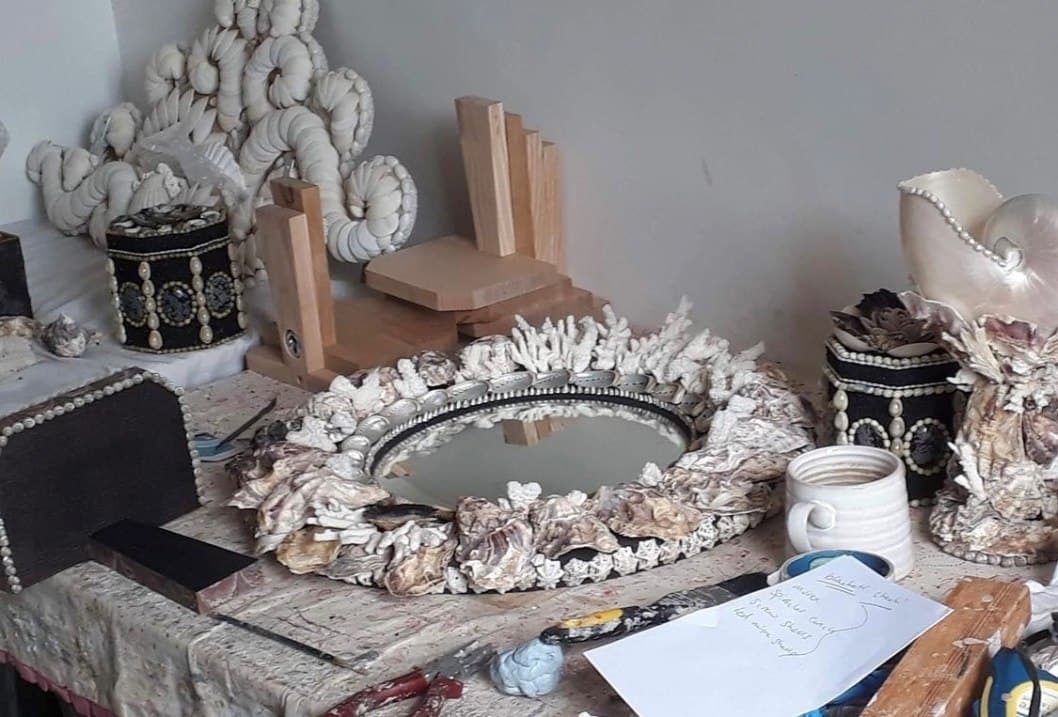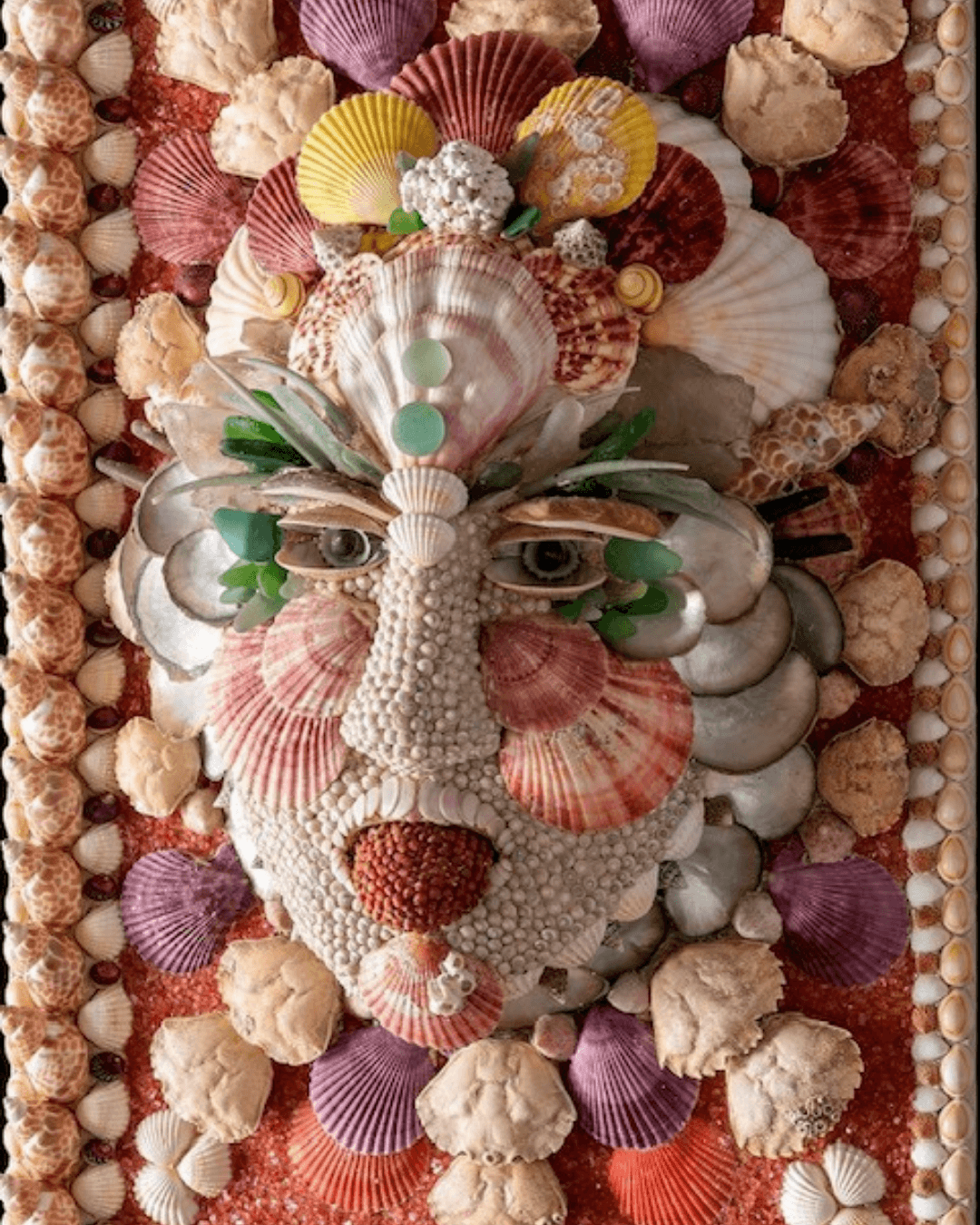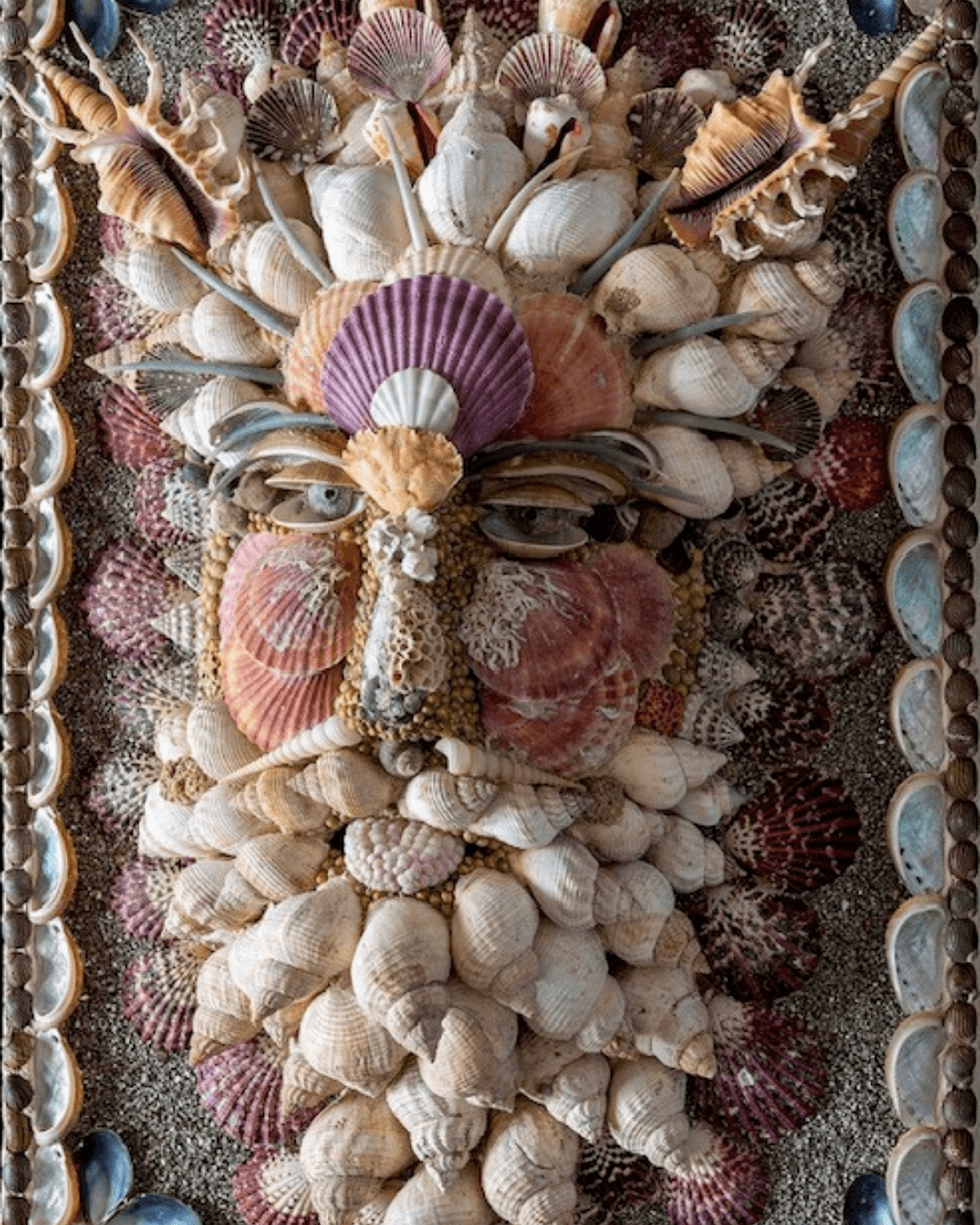Spring is a wonderful time to get outdoors and source natural objects for your crafts. It’s no secret that we love shell work and include it throughout our hotels, especially in Barbados. We have even dabbled in the craft ourselves – see our tips on how to create your own shell mirror here.
We had the pleasure of speaking with shellwork master Tess Morley. Join us as we meet the maker…
Tell us about your design process and how you find and choose your specific shells?
I like to recycle things – I try to collect shells such as scallops, oysters, and similar shells from fish restaurants. I have various contacts on the internet and I am also a part of the British shell collectors club, where we exchange shells and I can learn a lot about them.
Raised by the sea in Suffolk, her parents were both artists and Tess was surrounded by creativity. Studying printmaking at university, her artistry for shellwork began as she made shell masks for a theatre department in Brighton. Tess would sell the masks around the bohemian lanes of Brighton and they became popular, not only for actors and actresses but also for designers who used them decoratively. Tess now creates a variety of pieces including obelisks, mirrors, caskets, cups and chandeliers.
Tell us about your design process. Do you sketch or layout the shells or is it more of an intuitive process?
I like to rough it out, but clients love a drawing. I work best if it’s spontaneous! I just finished doing a shell panel. It was a very intuitive project, like a puzzle. I like the nature of the natural shells. I used to dye them but I’ve not done that for years. The organic tones are naturally beautiful.
Tess’ favourite objects to create are her shell grotesques: “I seem to enjoy doing them the most because I never know how they’re going to turn out – the works evolve as I make them”.
Tell us about where you work and do you feel inspired in different spaces?
Yes, I have a studio away from my house, but I find that my creative spaces leak all over the house. Like in the kitchen – shells can be found there as well!
I enjoy my restoration projects because I love to figure out how to restore things and how to do it by myself. The lady who was restoring the Goodwood Shell House took me under her wing and I became a part of that which was exciting. The Goodwood Shell House was built in the early 1700s by the Duke of Richmond for his wife and daughters to decorate. I’ve been involved for about 10 years. It requires serious restoration and careful repair.
Here’s a clip from Mary Berry’s Country House Secrets:
What inspires you?
I love going to museums and looking at old things such as Baroque or Renaissance ceramics. I love 3D objects. One of my favourite museums is the Victoria & Albert Museum, particularly the ivory carved hunting shell cups and antique jewellery. I obviously love Kit Kemp and her use of colour. I’m also a big fan of Kate Malone, Guy Good Fellow, and Bryan McCarthy.
Tell us about your upcoming projects…
I am designing a tiara and a panel at the moment. I have a couple of pieces going to Venice for the upcoming Homo Faber – a cultural event dedicated to contemporary craftsmanship, presented by the Michelangelo Foundation For Creativity & Craftsmanship.
We hope you enjoyed gaining an insight into Tess’ shell world and restoration work as much as we did. Find her projects here. We love the way Tess works with natural materials and the way she has used these in restoration projects. We are reminded of some of our favourite restoration works here in London by Heritage of London Trust including Alexander Pope’s Grotto and Wanstead Grotto.
Tell us about restoration work…
I’m choosy about projects, especially restoration projects because I often have to live away from home for long amounts of time. I love creating my grotesques because they evolve as I make them and I love to see them hanging on a wall all together.

